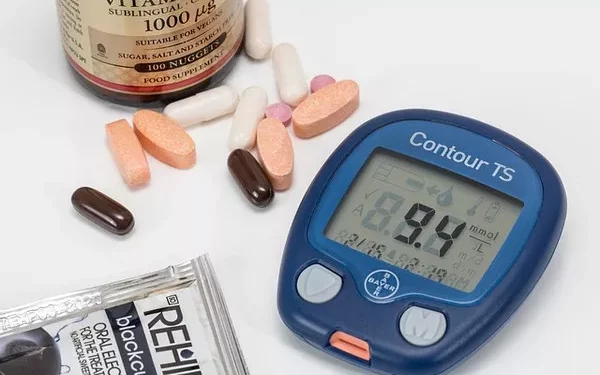Blood sugar levels, or blood glucose, are critical indicators of overall health. For individuals with diabetes or those at risk of developing the condition, monitoring blood sugar is essential in managing their health and preventing complications. Among various methods of monitoring glucose, random blood sugar testing is a widely used and valuable tool in assessing a person’s current metabolic status. This article will explore the value of random blood sugar testing, its purpose, how it fits into the broader context of diabetes care, and the factors that influence its interpretation.
Understanding Random Blood Sugar Testing
What is Random Blood Sugar Testing?
Random blood sugar (RBS) testing is a simple, non-fasting blood glucose measurement that is taken at any time of day, regardless of when the person last ate. It is typically measured in milligrams per deciliter (mg/dL) or millimoles per liter (mmol/L) and can be conducted with a fingerstick test using a glucometer or via laboratory analysis of blood drawn from a vein. Unlike fasting blood sugar (FBS) or postprandial blood sugar (taken after meals), which require specific timing, the random blood sugar test offers flexibility by being administered without the constraints of meal timing.
In clinical practice, random blood sugar measurements are often used to detect and monitor diabetes, offering a snapshot of an individual’s glucose status at a given moment. This test is usually one of several tools employed to diagnose diabetes or prediabetes, alongside fasting blood sugar and hemoglobin A1c tests.
The Importance of Random Blood Sugar Testing
1. Convenience and Flexibility
One of the primary advantages of random blood sugar testing is its convenience. It does not require any specific preparation such as fasting or waiting a set period after eating. This ease of use makes it an ideal tool for individuals who may not be able to adhere to more restrictive testing protocols. It is particularly useful in urgent situations, such as when a patient presents with symptoms of hyperglycemia (high blood sugar) or hypoglycemia (low blood sugar).
2. A Quick Assessment of Current Blood Sugar Levels
Unlike other tests that measure blood sugar over a prolonged period (such as A1c, which reflects average glucose levels over the past 2–3 months), a random blood sugar test provides an immediate, real-time picture of a person’s glucose level. This is valuable in clinical settings where quick decisions need to be made about immediate care, such as adjusting medications or determining the need for further testing.
3. Screening for Diabetes or Prediabetes
Random blood sugar testing plays an essential role in the screening process for diabetes. If an individual presents symptoms such as excessive thirst, frequent urination, or unexplained weight loss, a random blood sugar test can help determine whether the person is experiencing hyperglycemia, which may suggest undiagnosed diabetes. For diagnosis, a random blood sugar level of 200 mg/dL or higher, alongside symptoms of hyperglycemia, is suggestive of diabetes.
Moreover, random blood sugar testing can be useful in identifying people who may be at risk of developing diabetes, even before more specific testing is done. By offering a quick, preliminary insight into blood sugar levels, the random blood sugar test serves as a screening tool that helps identify individuals who should undergo further evaluation.
How Random Blood Sugar Values Are Interpreted
What is a Normal Random Blood Sugar Level?
In general, normal random blood sugar levels are less than 140 mg/dL (7.8 mmol/L). However, this range can vary slightly depending on the individual’s health status, their diet, and the specific testing method used. It’s important to note that random blood sugar levels fluctuate throughout the day and are influenced by various factors such as food intake, stress, exercise, and medication. As such, a single random blood sugar measurement is not necessarily indicative of a long-term health issue, but rather provides an immediate view of glucose levels.
Elevated Blood Sugar: Possible Causes and Concerns
Random blood sugar levels above 140 mg/dL can indicate the need for further investigation, especially if the levels exceed 200 mg/dL. Blood sugar levels in this range are commonly observed in people with diabetes, particularly if there is insufficient insulin activity or resistance. However, a one-time elevated random blood sugar test is not enough to confirm diabetes, as it may also be influenced by factors such as stress, illness, or certain medications (e.g., steroids).
For a diagnosis of diabetes, the random blood sugar test should be corroborated by other tests such as fasting blood sugar or an oral glucose tolerance test (OGTT). However, a random blood sugar level of 200 mg/dL or higher, along with symptoms of diabetes, is a strong indicator that the individual may have diabetes and requires immediate medical attention.
Hypoglycemia and Random Blood Sugar Testing
While elevated blood sugar is a common concern, random blood sugar levels can also be low, indicating hypoglycemia. Hypoglycemia is defined as a blood sugar level below 70 mg/dL (3.9 mmol/L), although symptoms of low blood sugar may occur even at levels higher than this. Hypoglycemia can result from various factors, including excess insulin, missed meals, excessive exercise, or alcohol consumption. For individuals with diabetes, monitoring random blood sugar is critical to prevent hypoglycemia, which can lead to serious complications if left untreated.
Random Blood Sugar vs. Other Blood Sugar Tests
Fasting Blood Sugar (FBS)
Fasting blood sugar measures blood glucose after an individual has fasted for at least 8 hours, typically overnight. It provides an indication of the body’s baseline glucose level, reflecting its ability to regulate sugar in the absence of food intake. Fasting blood sugar is a key diagnostic tool for diabetes. In contrast to random blood sugar, which can be affected by recent food intake, FBS offers a more controlled measure of the body’s insulin function and glucose regulation.
Oral Glucose Tolerance Test (OGTT)
The oral glucose tolerance test is another method used to diagnose diabetes and prediabetes. During this test, the individual consumes a sugary drink, and blood sugar levels are measured at intervals over a period of two hours. The OGTT is more time-consuming and invasive than random blood sugar testing but provides a more comprehensive picture of how the body processes glucose over time.
Hemoglobin A1c Test
The hemoglobin A1c test measures the average blood glucose level over the past 2–3 months. Unlike random blood sugar testing, which gives a snapshot of blood glucose at a specific moment, A1c reflects long-term glucose control and is particularly useful for monitoring individuals with diabetes. While A1c testing can provide a more comprehensive view of an individual’s overall glucose control, it cannot detect short-term fluctuations or acute changes in blood sugar levels as random blood sugar testing can.
Factors Influencing Random Blood Sugar Levels
1. Diet
Dietary choices significantly affect random blood sugar levels. High-carbohydrate meals, especially those rich in refined sugars, can cause blood glucose to spike shortly after eating. Similarly, meals high in fat and protein can also affect glucose metabolism, though to a lesser extent. People with diabetes or prediabetes should be mindful of their carbohydrate intake and monitor their blood sugar levels, especially after meals.
2. Physical Activity
Exercise has a profound impact on blood sugar levels. Physical activity helps improve insulin sensitivity, allowing cells to absorb glucose more efficiently. As a result, individuals who engage in regular physical activity often experience lower blood sugar levels, particularly after exercise. Conversely, a lack of physical activity can lead to higher blood sugar levels.
3. Medications
Certain medications, such as corticosteroids, diuretics, and some antipsychotic drugs, can raise blood sugar levels. Conversely, insulin and other blood sugar-lowering medications can lower glucose levels. People with diabetes who are taking insulin or oral medications need to carefully monitor their blood sugar levels to avoid hypoglycemia or hyperglycemia.
4. Stress
Stress, both physical and emotional, can elevate blood sugar levels. Stress hormones like cortisol and adrenaline can cause the liver to release stored glucose, leading to an increase in blood sugar levels. Chronic stress can, over time, contribute to insulin resistance, exacerbating blood sugar issues.
5. Illness
Illnesses, particularly those that cause fever or dehydration, can elevate blood glucose levels. The body’s response to infection involves releasing stress hormones that can increase glucose production. People with diabetes should be particularly vigilant about their blood sugar levels during illness to avoid complications.
The Role of Random Blood Sugar Monitoring in Diabetes Management
Early Detection of Glucose Abnormalities
Random blood sugar testing is an essential tool in the early detection of abnormal glucose levels. By identifying elevated blood glucose in individuals who are at risk for diabetes, clinicians can recommend lifestyle changes, dietary adjustments, and medications to prevent the onset of full-blown diabetes.
Personalized Diabetes Care
For individuals already diagnosed with diabetes, random blood sugar testing provides a personalized view of how their body is responding to food, exercise, and medications. By tracking random blood sugar levels, healthcare providers can adjust treatment plans to better manage the disease, helping to avoid both short-term and long-term complications associated with diabetes.
Prevention of Hypoglycemia
Random blood sugar monitoring is also essential for preventing hypoglycemia, especially in individuals on insulin or other glucose-lowering medications. By checking their blood sugar levels at various times during the day, individuals can avoid dangerously low blood sugar levels and adjust their medication or food intake accordingly.
Conclusion
Random blood sugar testing is a vital component of blood glucose monitoring, offering both convenience and flexibility in assessing an individual’s metabolic health. It provides an immediate snapshot of blood sugar levels, helping diagnose diabetes, screen for prediabetes, and manage the condition effectively. Though it is not as comprehensive as other tests like fasting blood sugar or A1c, it serves as a valuable tool in the broader context of diabetes care. For individuals with diabetes or those at risk, regular random blood sugar monitoring, combined with healthy lifestyle choices, medication, and professional guidance, is essential in preventing complications and maintaining long-term health.
Related topics:
What’s Normal Blood Sugar Levels for Diabetes
























